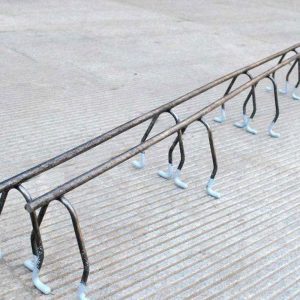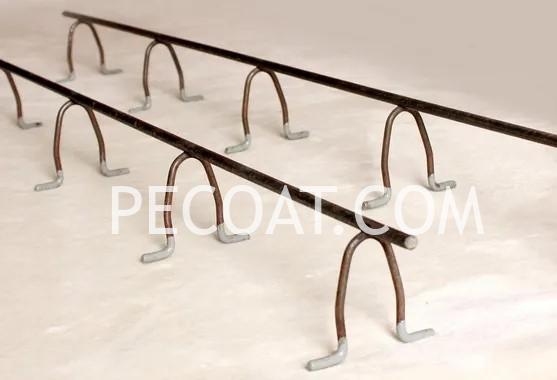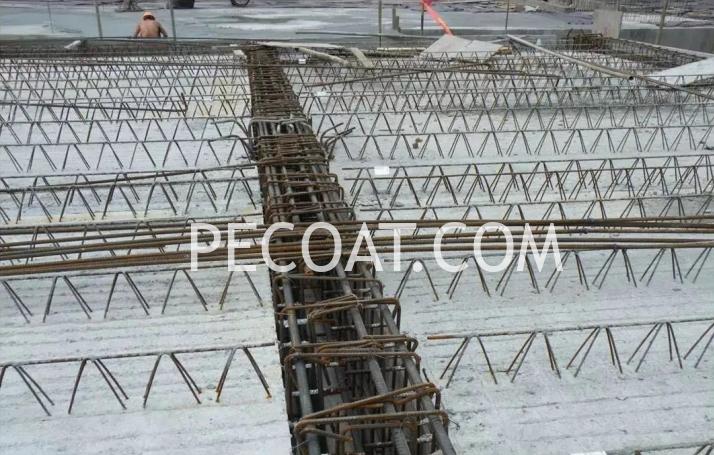Rebar Support Tipped Coated with Thermoplastic Powder

Rebar Support Plastic Tipped
Rebar support tipped coated with thermoplastic powder refers to a type of reinforcing bar, or rebar, which is coated with a thermoplastic powder at its tip. This coating serves several purposes, including improving the bond between the rebar and the surrounding concrete, enhancing the corrosion resistance of the rebar, and providing better anchorage during the construction process.
Thermoplastic powder coatings are made up of melted plastic particles that are applied to the surface of the rebar. These coatings are typically composed of polyethylene, polypropylene, or other thermoplastic materials. The melted particles form a uniform layer on the rebar, which bonds to the surface and provides a durable, protective coating.
The coating on the rebar tip improves the bond between the rebar and the concrete by providing a better surface for adhesion. This is especially important in reinforced concrete structures, where the bond between the rebar and the concrete is critical for the overall strength and integrity of the structure.
Another important aspect of thermoplastic powder coatings is their ability to enhance the corrosion resistance of the rebar. Rebar is susceptible to corrosion due to exposure to moisture and other environmental factors, which can lead to rust and weaken the structure. By coating the rebar with thermoplastic powder, the surface is protected from corrosion, extending the life of the reinforcing bar and the overall structure.

Finally, thermoplastic powder coatings provide better anchorage for the rebar during the construction process. The coating creates a stronger bond between the rebar and the concrete, ensuring that the rebar remains securely in place during the concrete’s setting and curing process.
Overall, rebars supported by thermoplastic powder coatings offer improved performance and durability in concrete structures, ensuring stronger and longer-lasting construction.
Rebar Support Function
The primary function of rebar support ( also called iron horse stool ) is to utilize the fixed upper steel mesh to withstand various construction activities, providing reinforcement for cantilever plates, balconies, awnings, pouring plates, and other structures. It effectively enhances the bearing capacity of these constructions and can endure trampling by construction personnel without causing distortion or subsidence in the upper steel components. Consequently, collapse incidents are prevented. This tool is primarily employed for securely binding steel bars in large load-bearing elements such as foundations, infrastructure projects, underground engineering works or bridges. Additionally, it facilitates connections between single or multi-layered steel bars within extensive construction industries.


do you supply powder or coating service? can you coat it for us?